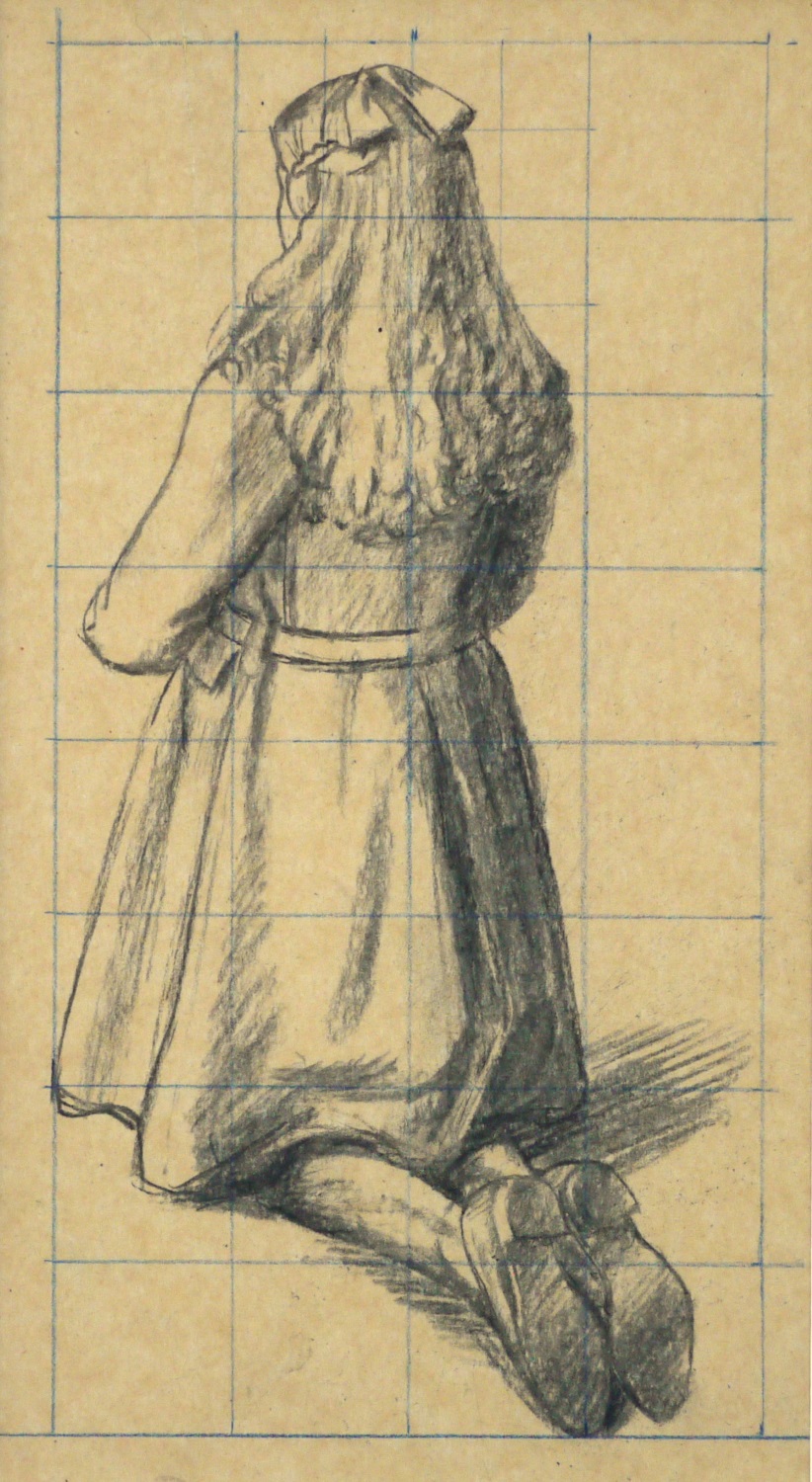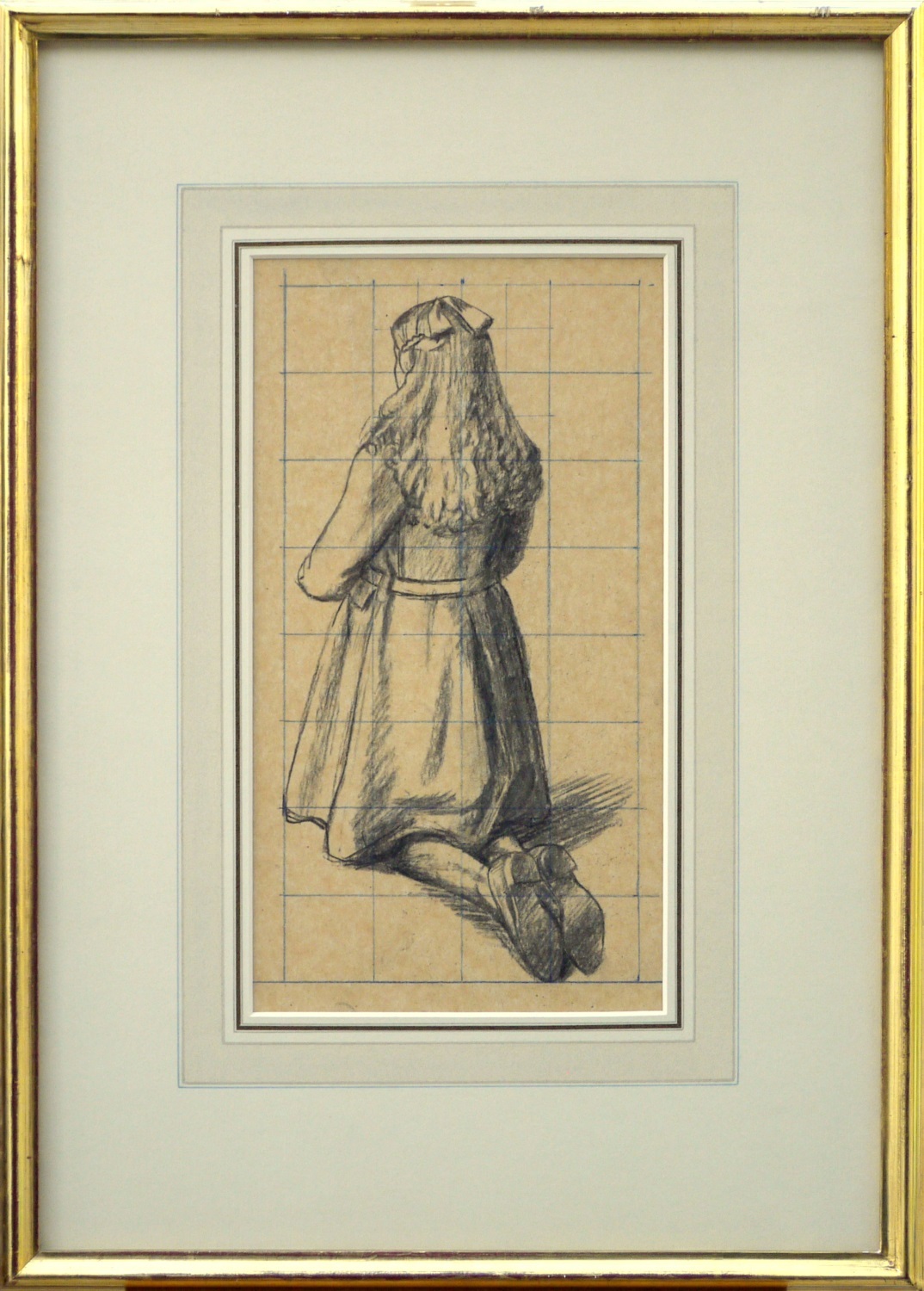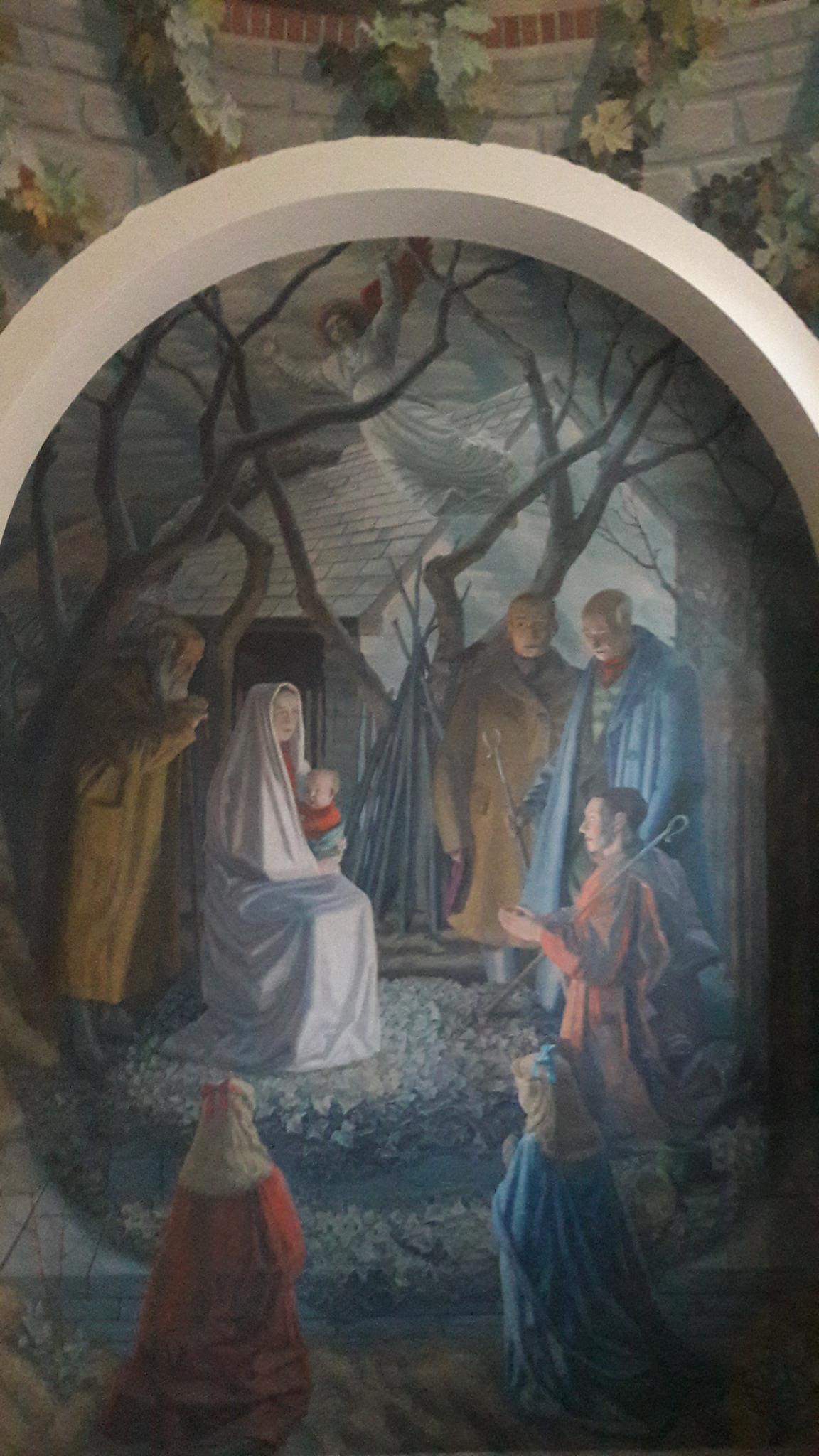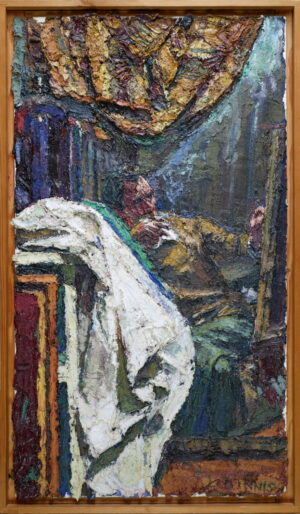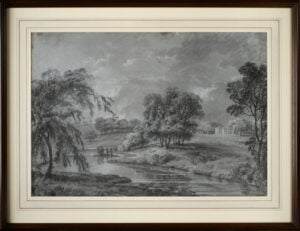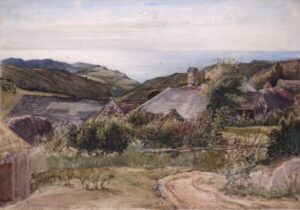Description
Mahoney was commissioned to produce a mural scheme for the Lady Chapel at Campion Hall in 1941. The scheme was to be made up primarily of three large panels: the Nativity and Adoration of the Shepherds, the Coronation of the Virgin, and Our Lady of Mercy. In detail and composition, the paintings owe much to early Italian examples.
Electing to paint directly onto canvas fixed to the walls and by daylight hours only, the project inevitably became drawn out and Mahoney could only work in situ during the Easter and summer vacations when he was not teaching. The project continued into the following decade and coincided with a serious decline in the artist’s physical health. In spite of these problems, Sir John Rothenstein, who chose to reproduce one of the murals as a plate in British Art since 1900 (1962, pl.60), was moved to describe the scheme as second …only to that by Stanley Spencer at Burghclere.
Campion Hall is one of the Permanent Private Halls of the University of Oxford in England. It is run by the Society of Jesus and named after St. Edmund Campion, a martyr and Fellow of St John’s College, Oxford. The murals are largely indebted to Fr. Martin D’Arcy, 6th Master of Campion who first invited the celebrated artist Stanley Spencer to consider taking on the Lady Chapel project, but Spencer proved himself eccentric and unpredictable. D’Arcy’s friend, Sir John Rothenstein, Director of the Tate Gallery, recommended a promising young teacher at the Royal College of Art, Charles Mahoney (1903-1968), who already had several murals to his credit. (These were later destroyed during the Second World War). Mahoney enthusiastically accepted the commission, and his working relationship with Campion Hall would continue for ten years, resulting in a set of richly coloured and detailed murals portraying the life of Our Blessed Lady which constitutes one of the most splendid and engaging treasures in Campion Hall.
